Neolithic: tools
Clay tools
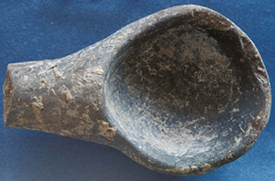 |
Spoons made from fired clay (others were made of bone, shell, and certainly wood) are most common in Late Neolithic II layers. They occur in several shapes and sizes, from small spoons to ladles or dippers, and were probably used to decant liquids or flour, mixing, or eating. The ends of the handles are often shaped as human heads and so can be easily mistaken for those of figurines if incomplete. | 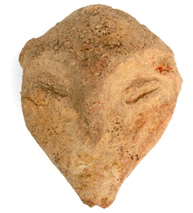 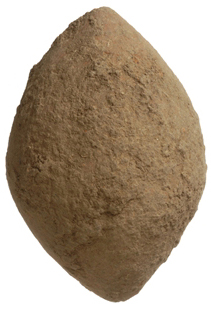 |
| In layers of the same period, lentoid shape, with two pointing ends are often found alone or in heaps. They often show traces of fire and friction, forcing us to abandon their traditional designation as “sling bullets” and postulate some other function, which for the moment remains undetermined. Perforated sherds are present in all Neolithic layers and spindle-whorls are especially common. They seem to be associated with spinning wool, but other fibres are also possible (linen, for instance). Spindle-whorls are often decorated with simple notches on their periphery or complex geometrical patterns, the most intricate of which have been interpreted as an early form of writing. Various kinds of loom weights that show wear-traces characteristic of their function occur mostly during the Late Neolithic II period and are often found in groups. Finally, we can include in tools (loosely defined), stamps: these are clay objects with an appendage for gripping that are richly decorated with incisions. They could have been used to stamp patterns on skin (tattoos) or on foods such as bread or cake. Their use for the decoration of ceramics seems unlikely as the incisions are not deep enough for this purpose. |
||
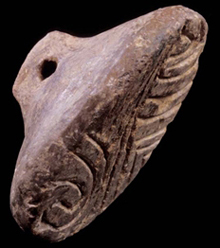 |
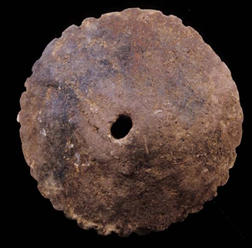 |
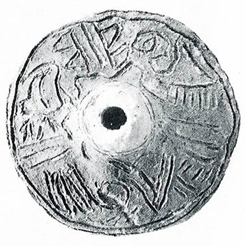 |

